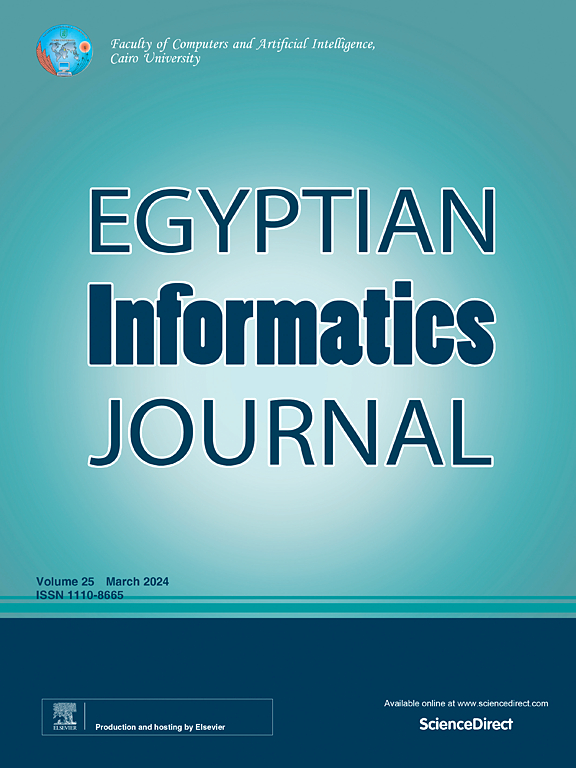基于三角突变和交叉视觉变换模型的增强白鲸优化器改进医学图像分类
IF 4.3
3区 计算机科学
Q1 COMPUTER SCIENCE, ARTIFICIAL INTELLIGENCE
引用次数: 0
摘要
在本研究中,我们引入了一种结合深度学习模型和改进的白鲸优化作为特征选择技术的医学图像分类框架。我们的方法利用了一种称为CrossViT的特征提取技术,这是一种视觉转换模型的ViT架构设计。利用交叉svit从医学图像中提取相关特征。采用改进版的白鲸优化(BWO)方法选择相关特征。改进后的BWO结合了三角变异算子(TMO)方法,增强了BWO利用问题空间的能力。利用CEC2022基准中的12个函数对改进的BWO (MBWO)性能进行了评估,并与传统的BWO进行了比较,随后在多个基准数据集上对所提出的医学图像分类框架进行了评估,显示了优异的性能结果。本研究结合深度学习和元启发式优化方法的优势,提出了一种创新有效的医学图像分类方法。本文章由计算机程序翻译,如有差异,请以英文原文为准。
Improving medical image classification based on Boosted Beluga Whale Optimizer with Triangular Mutation and Cross Vision transformer models
In this study, we introduce a framework for medical image classification that combines deep learning models with modified Beluga Whale Optimization as a feature selection technique. Our approach utilizes a feature extraction technique called CrossViT, a vision transformer model architecture design of ViT. The CrossViT is used to extract relevant features from medical images. A modified version of the Beluga Whale Optimization (BWO) method is also employed to select the relevant feature. The modified BWO incorporates the Triangular Mutation Operator (TMO) approach to enhance the BWO’s ability to exploit the problem space. A set of twelve functions from the CEC2022 benchmark is used to evaluate the Modified BWO (MBWO) performance and compare it with traditional BWO, followed by assessing the proposed medical image classification framework on several benchmark datasets, demonstrating excellent performance results. This study presents an innovative and effective approach to medical image classification by combining the strengths of deep learning and metaheuristic optimization methods.
求助全文
通过发布文献求助,成功后即可免费获取论文全文。
去求助
来源期刊

Egyptian Informatics Journal
Decision Sciences-Management Science and Operations Research
CiteScore
11.10
自引率
1.90%
发文量
59
审稿时长
110 days
期刊介绍:
The Egyptian Informatics Journal is published by the Faculty of Computers and Artificial Intelligence, Cairo University. This Journal provides a forum for the state-of-the-art research and development in the fields of computing, including computer sciences, information technologies, information systems, operations research and decision support. Innovative and not-previously-published work in subjects covered by the Journal is encouraged to be submitted, whether from academic, research or commercial sources.
 求助内容:
求助内容: 应助结果提醒方式:
应助结果提醒方式:


